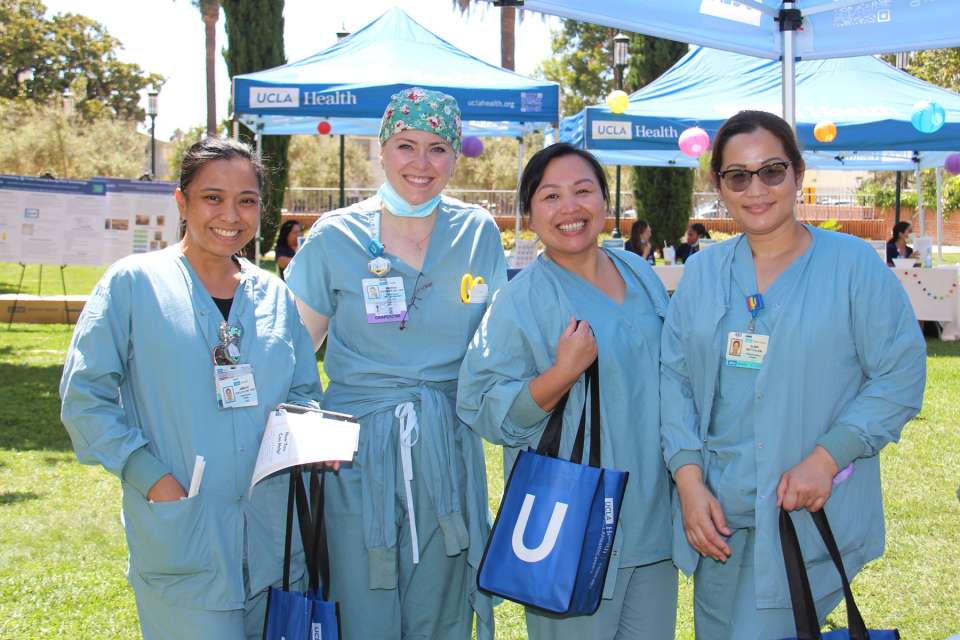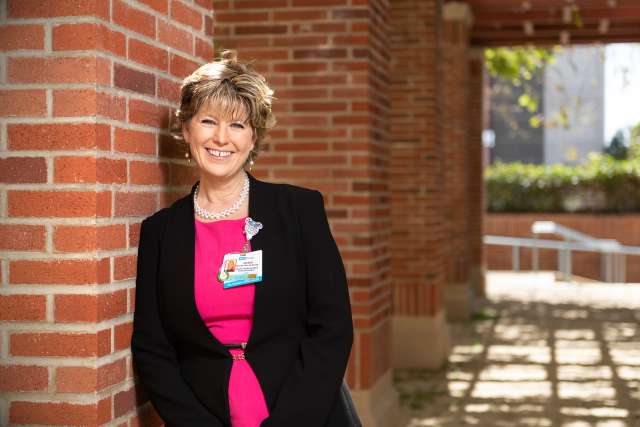Professional governance is the backbone of shared decision-making in nursing practice at UCLA Health. Guided by a set of bylaws and operating under a structure of multilevel councils, the governance system empowers nurses to participate in decisions that impact their practice, patient care, work environment and professional development.
“Professional governance provides the structure and process for nurses to practice at the top of their licensure and be in control of their decisions,” says Coleen Wilson, DNP, RN, NEA-BC, senior director of adult inpatient nursing at UCLA Santa Monica Medical Center. “It ensures their voices are heard and that they actively participate in the process.”
When launched in 2018, the Professional Governance Model consisted of eight councils aligned across facility and system levels. Each system council had a corresponding facility council. “Over time, nursing has made structural changes to eliminate duplicity and streamline decision-making," Dr. Wilson says. Some recent changes include:
- Merged the facility-level and system-level Exemplary Professional Practice Councils into one system-level Evidence-Based Practice Council focused on identifying ways to update practice to enhance patient safety and outcomes;
- Transformed the New Knowledge and Innovations Council from a facility-level to a system-level council called the New Knowledge, Innovations and Improvements Collaborative, with representation from each unit in all three hospitals;
- Integrated the facility-level Structural Empowerment Councils into the system-level Professional Development Council, with representation from each unit in all three hospitals;
- Transformed the Coordinating Council, consisting of clinical leaders and executive leaders from Ronald Reagan UCLA Medical Center, UCLA Santa Monica Medical Center, Resnick Neuropsychiatric Hospital at UCLA and ambulatory care. This council recently merged with the Empirical Outcomes Council to become the Nurse Executive Council; and
- Launched the Unity in Diversity Council, a system-level council that aims to establish an environment of equity, diversity and inclusion for patients, trainees, volunteers and staff. The council hosted the first Unity in Kindness Day in May 2022 and collaborated with Press Ganey to develop questions to assess patient experience related to equity, diversity and inclusion in the care they receive.

The Professional Governance Model currently comprises one Transformational Leadership Council at each facility and seven system-level councils: Nurse Executive Council; Unity in Diversity Council; Evidence-Based Practice Council; Professional Development Council; New Knowledge, Innovations and Improvements Collaborative; the Transformational Leadership Collaborative; and Research and Innovation Council. In addition, each Unit Practice Council (UPC) has representation at the facility- and system-level Transformational Leadership Council and Collaborative.
Dr. Wilson notes the nurse-driven changes in the governance structure have created a more cohesive environment. “For the first time, I look at our councils truly as a system in which the individual councils rely on one another, as opposed to operating in facility silos,” Dr. Wilson says. “Our council representatives are very engaged and making a difference. They’re working on initiatives to improve patient outcomes and putting into place new practices that will increase efficiencies and allow us to take care of more patients or broaden the scope of our services. That’s the return on investment our organization receives.”
Integrating education with leadership
“Setting U Up for Success” is a leadership-development course for new council members. Designed by Kelley Anderson, MSN-Ed, RN, nursing professional development practitioner with the Center for Nursing Excellence, the sessions help nurses understand the value they bring to the organization. “We talk not only about the exceptional clinical care that nurses provide, but also about the financial impact we have on our organization and our communities,” Dr. Wilson says. “For example, between fiscal years 2019 and 2022, nursing eliminated about $3 million in future expenditures from a nurse-driven reduction in hospital-acquired injuries. Likewise, identifying opportunities to improve efficiencies and workflows can bring more revenue into the organization,” she adds.
A similar course offered for new UPC chairs focuses on conducting meetings and looking at evidence-based practices organizationally. “It sets the UPC chairs up so they can mentor their teams as they work through their projects,” Dr. Wilson says. “It is very much needed and has been well-received.”
UPC Summit
In 2022, nursing held the inaugural UPC Summit to showcase the work of the Unit Practice Councils systemwide. The UPCs displayed their projects and initiatives, which included posters and podium presentations. Members of the Research and Innovation Council coached the units in developing their projects, which focused on reducing hospital-acquired infections, elevating performance on key nursing-sensitive indicators and related patient outcomes.
Dr. Wilson praised the work of the UPC members, noting that the event served two purposes. “It gave us the opportunity to celebrate their exceptional work and to identify what we need to share so we have consistent clinical practices across the organization that everybody can rely on,” Dr. Wilson says. “Standardization is important to expand upon the great work that’s being done.”
Jennifer Karmarkar is the author of this article.
